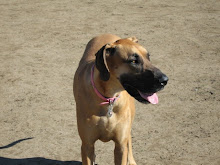Your dog is fat. OK, possibly not.But there's a very good chance he or she is, and you don't even know it.Statistics vary, but veterinarians report that as many as 25 - 44% of all dogs are overweight, and that obesity is the number-one canine health disorder. Obesity is defined as weighing over 15% more than the standard accepted weight for the dog's height.With nearly half of our dogs weighing in on the heavy side, it's no surprise, then, that obesity-related conditions are on the rise within the pet population. These conditions include diabetes mellitus and orthopedic, musculoskeletal, cardiovascular, gastrointestinal, endocrine, respiratory, immune and reproductive disorders. These can be devastating conditions for your dog to live with.Doctors ascribe the rise in obesity to a combination of the general lack of fussiness of dogs, their natural gorging behavior, and insufficient exercise.And since dogs don't do their own grocery shopping or prepare their own meals, we must add to this a prevailing ignorance among their owners in providing a nutritious, well-balanced, calorie-controlled diet.Do you know if your dog is fat or fit? Do you know her daily caloric requirements? Do you know what factors may mitigate those daily caloric requirements?Did you know regular dog food is packed with sugar and fat to make the toxic crap they put in it palatable?A healthy dog is ready to eat at any time. Some dogs quite literally can eat while flat on their side and more or less asleep. Therefore, it is pointless to use your dog's begging behavior as any indicator of how much to feed him.Knowing how many calories he needs and how that translates into food will help keep him trim and healthy. Energy needs for the dog change throughout his life, increasing the more active he becomes, and, as you might surmise, decreasing as the dog reaches his senior years.Your vet will help you determine if your dog's weight is on target, or if she is headed for fat city, and all diet-related considerations should definitely be discussed with your vet before introducing any major changes into your dog's nutritional sphere. But, before your next office visit, you can do an assessment to determine (albeit imprecisely) your dog's general body condition and weight.Can the ribs be easily felt with slight fat cover, or are they difficult to feel under moderate or thick fat cover?From the side view, do you see an abdominal tuck?Is there thickening at the tail base?From the overhead view, is there a well-proportioned waist?Or, from the overhead view, does she have a marked hourglass shape? (an indicator of being underweight)Or, from the overhead view, is the back slightly or markedly broadened at the waist? (indicators of being moderately to severely overweight)Is your dog slow to rise or move around?Is she reluctant to exercise, or does she tire easily with activity?Individual metabolism, exercise, age, environment and overall health will determine what your dog really needs to remain lean and healthy. Since your dog can only have so many calories every day, it is important to pack lots of nutrition, bulk and appeal into those calories.Our wildly popular Dog Food SECRETS-- information products can help you step-by-step overcome your nutritional naivete.Embracing this information doesn't mean you have to prepare every meal with a set of scales on the counter, no. Do it a few times and you can do it forever.After you determine your dog's caloric needs, the ideal solution to meet those needs is to prepare your dog's food at home, where you can have total control over the caloric and nutritional content.Our books can help you there, too -- as it includes a collection of easy, healthful, natural and delicious recipes created with your dog's palate and welfare in mind. In fact the Silver and Gold packages include over 200 easy-to-make healthy recipes.
About The Author Andrew LewisDiscover everything you need to know about http://www.thedogfoodconspiracy.com/dog-food-secrets.php , the 1 element in dog health. Subscribe to http://www.thedogfoodconspiracy.com newsletter to learn more.
dog health, dog toys, dog treats, dog bowls
Subscribe to:
Post Comments (Atom)




No comments:
Post a Comment